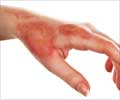The patients most bothered by scarring are those with scars in highly visible areas, like the face, as well as younger individuals.

‘Scars can be of two main types. Raised or hypertrophic scar, which can be improved via steroid injections or laser treatments and pitted or atrophic scar, which can be improved via dermal filler injections.’





According to Dr. Sobanko's research, the patients most bothered by scarring are those with scars in highly visible areas, like the face, as well as younger individuals and those with occupations that require frequent interactions with others.1 And while scarring is a common concern that dermatologists encounter, Dr. Sobanko says, he was surprised to learn how strongly this concern affects patients - research has found that the majority of patients would "go to any lengths to minimize scarring."2 "A visible scar serves as a constant reminder of a negative experience in the patient's life, like a serious burn or a skin cancer diagnosis," Dr. Sobanko says. "By improving a scar's appearance, dermatologists also can help patients overcome whatever trauma caused that scar."
Fortunately for patients, dermatologists have developed an improved understanding of the biology of scarring, allowing them to provide more effective treatment that can improve the appearance of scars and thereby improve patients' quality of life.
A scar forms when trauma disrupts the collagen in the skin, Dr. Sobanko says. When too much collagen builds up, the result is a raised (or hypertrophic) scar, which can be improved via steroid injections or laser treatments to break down the excess collagen. A lack of collagen, on the other hand, causes a pitted (or atrophic) scar, which can be improved via dermal filler injections or laser treatments to build up the collagen.
In some instances, Dr. Sobanko says, these minimally invasive treatments can be combined to further improve the scar's appearance. In more severe cases, he says, the best way to improve the scar may be surgically reopening and reclosing it.
Advertisement
Dr. Sobanko says patients can take a proactive approach to improving the appearance of scars after surgery or injury. He says the most important step is avoiding any physical activity that could aggravate the wound and pull it apart, such as sports or heavy lifting. He also recommends that patients apply petroleum jelly to the wound to promote healing.
Once a scar has formed, Dr. Sobanko says, patients should be careful to protect it from the sun, as ultraviolet radiation can cause scars to become discolored and more noticeable. The American Academy of Dermatology recommends a comprehensive sun protection plan that includes seeking shade, wearing protective clothing, and using a broad-spectrum, water-resistant sunscreen with an SPF of 30 or higher.
Advertisement
"If you're concerned about a scar, talk to a board-certified dermatologist," Dr. Sobanko says. "Whether you want to approve the appearance of an existing scar or minimize the appearance of a scar following surgery, a dermatologist can determine the best way to help you achieve the results you want - and hopefully improve your quality of life."
Source-Newswise









